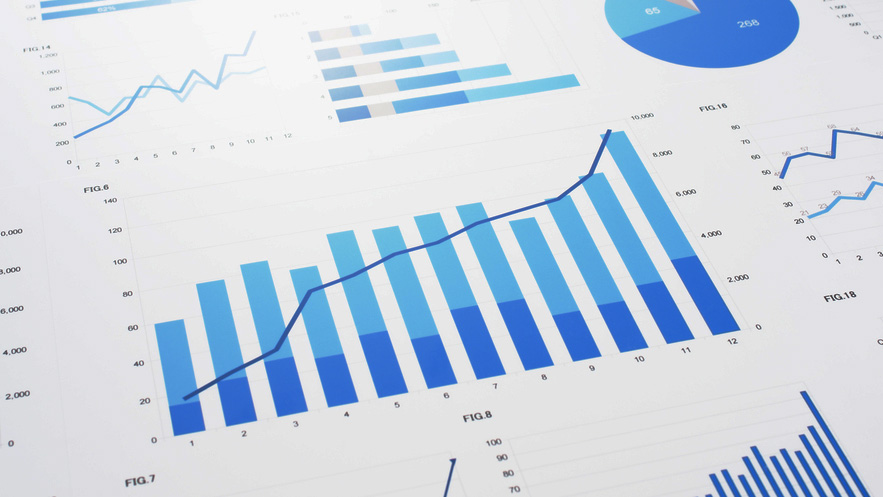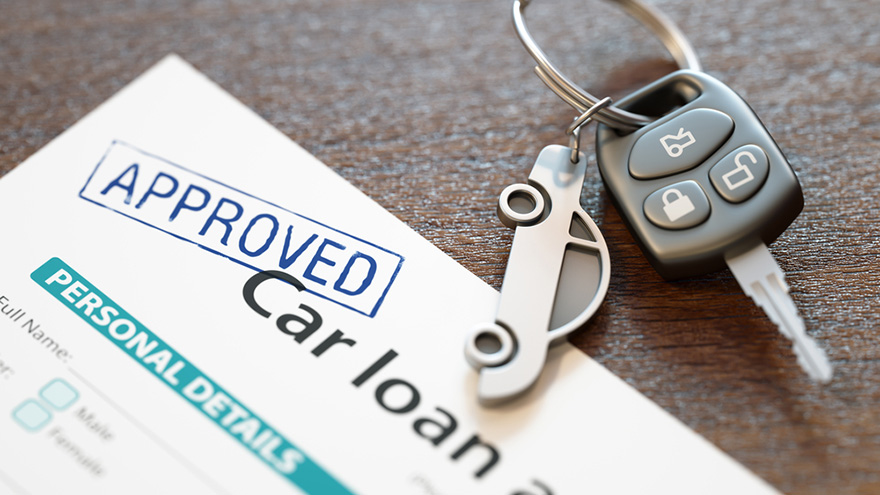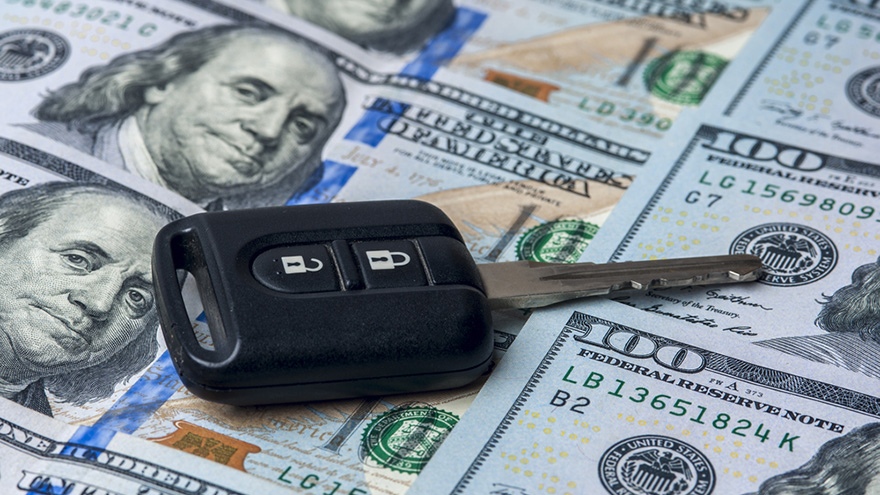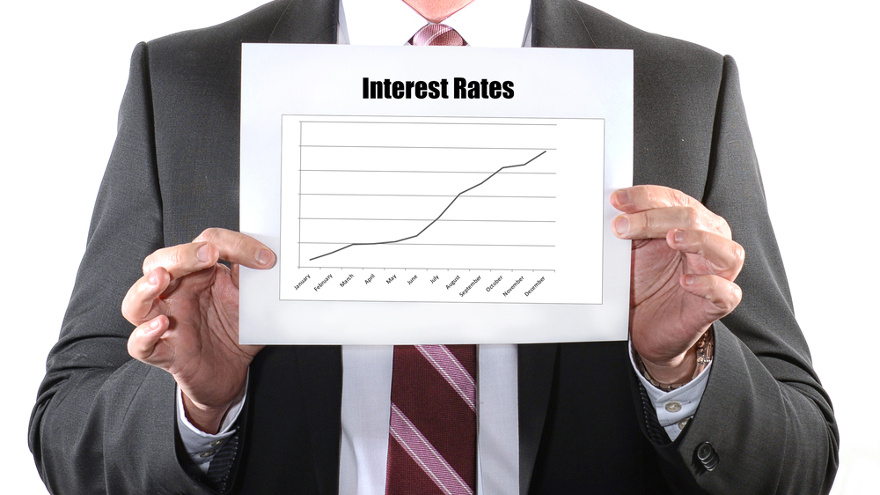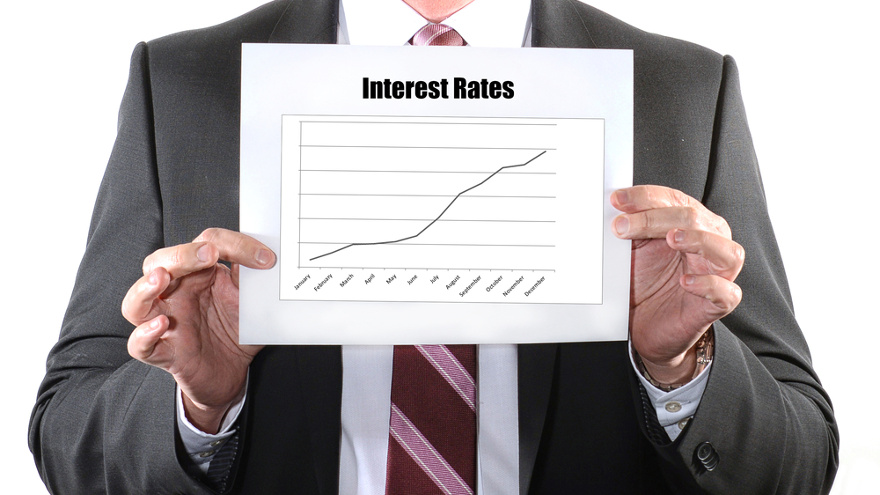Finance companies continue to fill and expand their portfolios, especially when buying paper attached to a new vehicle that’s becoming more difficult for consumers to afford as transaction prices and interest rates keep climbing.
October data shared by Edmunds and Kelley Blue Book on Thursday morning illuminated the trends, which to a degree are being impacted by high-line models.
The analysts at Kelley Blue Book reported the estimated average transaction price for light vehicles in the United States came in at $37,007 in October. They indicated new-vehicle prices increased by $1,118 or 3.1 percent year-over-year while remaining flat compared to the previous month.
“October was a strong month for transaction prices, as the new-car average rose 3 percent,” Kelley Blue Book analyst Tim Fleming said. “However, much of the growth was aligned to higher priced vehicles like full-size trucks and SUVs.
“In addition, Tesla is now driving the industry numbers up in a meaningful way as the brand’s sales volume recently soared to the level of top luxury automakers,” Fleming continued.
“All segments in the $20,000 to $30,000 price range also showed little-to-no growth, which could be cause for concern considering these segments make up nearly half of the industry’s sales totals,” he went on to say.
And with only select consumers having at least $20,000 readily accessible — especially in the subprime space — the demand for financing is there, putting even more light on the interest-rate moves made by the Federal Reserve.
Tightening credit conditions continued to squeeze consumer wallets in October, according to the experts at Edmunds. The annual percentage rate (APR) on new financed vehicles averaged 6.2 percent in October, a 1.3-percent increase from a year ago, and a 2-percent increase from five years ago.
Edmunds pointed out that average is at the highest level on record since January 2009.
Edmunds analysts note that these higher interest rates contributed to the scarcity of zero percent finance loans, which fell to their lowest level since 2007. The percentage of sales with zero percent finance deals dropped to 3.8 percent in October, compared to 7.5 percent in 2017 and 7.8 percent five years ago.
“We haven’t seen interest rates hit the 6 percent mark in nearly 10 years, and zero percent finance loans have been cut down by nearly a third of where they were in 2016,” said Jeremy Acevedo, Edmunds’ manager of industry analysis.
“It’s getting harder and harder for shoppers to afford a new car, and if the economy starts to slip, we’re at a point now where we really could start to see some significant impacts in the auto market,” Acevedo continued.
Edmunds mentioned high interest rates have been the driving factor eating into car shoppers' wallets.
Analysts computed the average new-vehicle buyer will pay $1,316 more in interest over the life of the contract if the individual bought a vehicle this past October compared to October of last year (taking into consideration average term lengths, average amount financed and average APRs).
And Edmunds reiterated that shoppers with lower-than-average credit scores could pay even more.
“Access to cheap credit has been a key factor in the industry's post-recession sales rally and transition toward pricier trucks and SUVs. Now that we’re entering a time when transaction prices are also booming, these rising rates compromise affordability and will likely begin to dampen demand moving forward,” Acevedo said.
“Even with upcoming holiday sales piling extra cash on the hood, shoppers planning on financing might be finding themselves priced out of vehicles they thought they could previously afford,” he went on to say.
With the interest rates connected to a retail installment sales contracts becoming more pronounced thanks to actions by the Federal Reserve, Carleton recently revisited a topic the compliance firm often discusses with clients.
Carleton reiterated official definitions as well as shared best practices regarding how best to achieve accuracy in Truth in Lending Act (TILA) disclosures for annual percentage rates embedded in those contracts.
To address the corresponding regulatory requirements, Carleton explained there are three key considerations, including:
—TILA’s Regulation Z states the annual percentage rate is “to be determined,” meaning calculated.
—Appendix J to Regulation Z contains 15 pages of definitions, variables and algorithms to accurately calculate an APR value.
—Yet, nowhere within Regulation Z is there any guidance that “in the absence of fees included in the finance charge, the resulting APR will be the same as the interest rate.”
To be clear, Carleton recapped the federal explanation included within Regulation Z to define the determination of annual percentage rate.
“The annual percentage rate is a measure of the cost of credit, expressed as a yearly rate,” the act states. “Creditors may use any other computation tool in determining the annual percentage rate if the rate so determined equals the rate determined in accordance with Appendix J to this part, within the degree of accuracy set forth in paragraph (a) of this section.”
Carleton acknowledged that it is a common practice of loan origination and dealer management systems to pass the contract interest rate to populate the TILA APR portion of the “Fed Box” for retail installment sales transactions. In those instances, Carleton explained there is no actual “calculation” of an APR but it is simply a reiteration of the interest rate.
“The frequent assumption is that with no fees included as part of the TILA finance charge, the interest rate will always be within the 0.125-percent tolerance allowed by Regulation Z when measured from an accurately calculated TILA APR,” Carleton experts said.
“However, to assure compliance — despite the interest rate value being within the tolerance most of the time — Carleton’s recommendation is to always compute an accurate and precise APR to absolutely ensure compliance for both regulatory and civil liability needs,” the firm continued.
Carleton went on to mention that oftentimes the two resulting rates (the APR and the interest rate) may legitimately be represented by identical values. More often than not, Carleton noted that any differences are driven by differences in the calendars used by the system(s) to compute the actual interest.
“In today’s world, ‘simple interest’ has become quite prevalent and incorporates an interest charge based on the actual calendar days existing between scheduled payments,” Carleton said.
“But the actuarial method of computing a TILA APR disregards the fact that months have varying numbers of days and treats each ‘month’ as 1/12 of a year. Thus, the two rates in comparison may actually be derived from disparate and divergent principles,” the firm continued.
Carleton emphasized that it is important to note that the 0.125-percent tolerance requirement is only a TILA “regulatory safe harbor” within a lending transaction.
“The more critical concern is often litigation and defending an ongoing ‘pattern of practice,’” the firm continued.
Should an accurately-computed APR be slightly larger than a base-computed interest rate on a regular basis, a claim of consistently under-stating the APR value on the contract to consumers may be problematic, according to Carleton.
“The chosen methodology is ultimately driven by a lender’s tolerance for risk pertaining to compliance,” Carleton said.
“Carleton’s best practice recommendation is for lenders to adopt an accurately computed TILA APR as their ‘no-risk’ solution,” the firm concluded.
For more details, go to carletoninc.com.
When reacting to this week’s trade announcement coming from the White House, one of Edmunds experts cautioned that, “Given that new-vehicle prices are already stretched to record highs, things could take an ugly turn for consumer wallets, especially considering the trend of continuously rising interest rates.”
Well, that ugliness Edmunds referenced might have arrived just a day later.
Edmunds reported that high interest rates continued to put pressure on new-vehicle sales in September. The annual percentage rate (APR) on new financed vehicles averaged 5.8 percent in September, compared to an average APR of 4.8 percent in September of last year and 4.1 percent five years ago.
Edmunds also noted that interest rates have stayed above 5 percent for eight months in a row, mirroring APRs that the industry witnessed prior to the recession.
Analysts noticed an increase in the average down payment for new vehicles, a steep drop in zero percent finance contracts and a contraction of terms as signs of tightening credit conditions for shoppers. In September:
● The average down payment for a new vehicle soared to $4,198, compared to $3,817 in September 2017 and $3,555 five years ago.
● The availability of zero percent finance loans dropped to 5.6 percent compared to 10.1 percent in September 2017, hitting the lowest September level since 2005.
● Average loan terms contracted to their lowest levels all year, dropping to 68.7 months in September, compared to 69.4 months in September 2017 and 65.5 months five years ago.
“The trickle-down effect of elevated interest rates really started hitting car shoppers in September,” said Jeremy Acevedo, Edmunds’ manager of industry analysis.
“While new-vehicle prices continue to rise, favorable credit offerings are growing increasingly more difficult to come by,” Acevedo continued. “Buying conditions are far less amenable for consumers than they were before, which might come as a shock for shoppers coming back to the market for the first time in a few years.”
Edmunds experts reiterated that that the Fed rate hike that went into effect toward the end of September is a harbinger of worsening market conditions heading into the fourth quarter.
“The higher Fed effective rate means we can expect to see interest rates continue to inch up as we head into the rest of the year,” Acevedo said. “While strong economic factors like low unemployment rates and high consumer confidence have helped sustain healthy sales levels so far amid less favorable conditions, cheap and easy credit is really what shoppers zero in on when purchasing a new vehicle.
“As credit offerings grow more rigid for consumers, automakers are facing increased pressure on new vehicle sales through the end of the year,” he added.
New-Car Finance Data
|
|
September 2018
|
September 2017
|
September 2013
|
|
Term
|
68.70
|
69.36
|
65.51
|
|
Monthly Payment
|
$537
|
$511
|
$467
|
|
Amount Financed
|
$31,062
|
$30,736
|
$27,081
|
|
APR
|
5.80
|
4.83
|
4.07
|
|
Down Payment
|
$4,198
|
$3,817
|
$3,555
|
Used-Car Finance Data
|
|
September 2018
|
September 2017
|
September 2013
|
|
Term
|
66.95
|
66.81
|
64.28
|
|
Monthly Payment
|
$401
|
$386
|
$366
|
|
Amount Financed
|
$21,697
|
$21,380
|
$19,470
|
|
APR
|
8.38
|
7.52
|
7.81
|
|
Down Payment
|
$2,657
|
$2,494
|
$2,161
|
The market fundamentals in non-prime are signaling positive. A strong economy and low unemployment are contributing to stabilization in consumer credit scores. Auto defaults are at the lowest point with one full quarter of improvements under the belt.
There continue to be new auto bond issuances, and the spreads on these lowest-rated of these securities are tightening. Competition in the secondary market for non-prime portfolios is high, thanks to the portfolio quality of the underlying assets holding up.
By many measures beyond just these, the non-prime market is showing signs of a change in trend from bear to bull. Whereas private equity (PE) interest was ice cold, things are starting to thaw. Now PE wants back in. But, why now, and why do they want back in?
Let’s take a walk down memory lane
Competition for deals amongst private equity firms for unsecured lending opportunities for the past few years has grown more and more intense. In the prior market cycle just following the Great Recession, Private Equity had excess un-deployed capital that was intended for residential real estate. They pivoted their focus to high-yield, non-prime auto loans.
But, private equity returns in non-prime auto weren’t there. And, the exit wasn’t there either. So, they took their lumps and pivoted again, this time to unsecured assets like financing elective surgery and jewelry purchases. They also pivoted their focus to fintech, placing bets on disruption, and that big banks will adopt this tech. To private equity, fintech offers an exit path more like that of the subprime bureaus, where each major bureau has acquired at least one of these “big data / alternative bureau” providers.
The private equity bets on unsecured, and fintech have been good ones. So, why do they want back in on auto?
This time it will be different
The disruptive nature of fintech is the reason is why. Fintech is completely restructuring how consumers and auto finance companies engage. Fintech has commoditized the application process, the process to evaluate risk, and how customers are serviced. Whereas in the prior market cycle, PE would take equity position in a “soup to nuts” non-prime operations, now they are focusing more on the assets and balance sheet financing. The value of the traditional auto finance company has been morphed from one that has a superior scorecard, or collection process, PE knows that Fintech has largely outsourced and commoditized what were strategic assets. Why build your own custom loan origination or loan servicing system when myriad outsourced options exist? And, why re-invent the wheel? One must look no further than what Uber did to the value of a NY Taxi medallion, and you will see what they are seeing.
The “Amazonification” of financial services businesses is what fintech is all about.
Let’s hear it directly from the source
And who better to hear it from than from the PE folks themselves? Some recent conversations with PE firms and the investment bankers that work directly with them provide us some valuable insight as to why this next cycle will be different. It will be different because of their shift to unsecured options for higher yield (as a suitable replacement to auto), but more importantly due to Fintech disruption. What constitutes itself as an asset of a financial services company is different than just a few years ago. Heck, what comprises what we now call a financial services company is different than a few years back.
Let’s look at the top three themes from these conversations:
1. Balance sheet
PE interest is squarely on the balance sheet and resulting deal structures will continue to show it. Larger PE firms are looking to be a senior secured lender, with capital deployments north of $40 million — directly into collateral.
Loan originators that could use more balance sheet to originate more can benefit from PE investment. And, they can also be effective as a capital bridge to securitizations — as discussed before, a very healthy and stable market.
2. Fintech
Fintech firms trade on a multiple of revenues, while finance companies trade on a multiple of earnings. And, a good fintech solution done right can provide value to small finance companies and big banks, which provides a lot of click revenue. So, this is just a case of investing money into something that will return more money.
Not to be discounted is the actual value of the fintech being created and made available to the non-prime finance community. Take for example a small, regional finance company that just 10 years ago would be operating on spreadsheets and a small IT footprint. That same company can operate in a cost-efficient, cloud-based environment, and utilize AI-based solutions that root out fraud, improve credit selection, drive behavioral scoring — all on subscription or a per-click basis.
3. Confidence in outsourced servicers
Without confidence in outsourced servicers, PE would not be diving back into the non-prime asset class. The market for secondary whole loan trades has been hot and is not cooling down thanks to increasing interest from PE investors. And, that confidence is bolstered by a few key points:
• Outsourced servicers are complex; many are servicers of their own debt that rent out their additional capacity, and the result is a more stable place to park your portfolio
• Outsourced incentives are changing; we are hearing more and more about servicers putting “skin” in the game and taking compensation that is tied to targets shared with the portfolio owner
• What makes an outsourced servicer is less about geography, and more about supplementing specific skill sets, and this is providing cost savings while improving portfolio performance
• Outsourced servicers can deploy technology, training, and analytics in ways that benefit multiple companies in much the same way that Fintech can disrupt
• A more sympathetic Consumer Financial Protection Bureau changes the outlook as well
The PE firms interviewed agreed that their confidence in outsourced servicers is an enabler to giving them the confidence to get more aggressive on deploying their capital into auto assets and knowing that the results will be on target.
The democratization of auto finance
The retail car sales process is not what it used to be. You can find your car online and pick it up from a vending machine. Or, you can use your car as a taxi. Or, you can subscribe to a car service. Or, you can just rent a bike or a scooter. It is no longer about “car ownership.” It’s about mobility. The disruption of the retail car model and the democratization of mobility is in full swing.
The democratization of auto finance is just getting started. And increased PE interest has a track record of begetting more PE interest. Last time around, PE took some lumps along with the finance companies that they invested in. There were no winners. This time around the game board is set up a bit differently. Finance companies will win this time around if they can effectively utilize PE capital in its updated format. Fintech companies will continue to win, as the early cloud-based, and big-data companies already have. Finally, outsourced servicers will win by becoming a more mainstream and standard option that will see increasing demand as more and more PE firms choose to engage them.
Joel Kennedy is a director with Spinnaker Consulting Group. He has a passion for growing and improving auto finance ecosystem. He has more than 23 years of experience helping big banks down to start-up finance companies to build, grow, improve, and repeat. He can be reached at (240) 308-2169 or [email protected].
As down payments and the amount financed for new- and used-vehicle deliveries at franchised dealerships stay on a steady pace, Edmunds noticed the impact of the Federal Reserve pushing interest rates higher are starting to leave a mark on APRs.
Analysts noticed the annual percentage rate (APR) on financed new vehicles averaged 5.74 percent in July compared to 4.77 percent in July of last year, representing the largest year-over-year jump that Edmunds has seen so far in 2018.
While not quite as dramatic as the nearly 1 percentage point rise for new vehicles, APRs for financed used vehicles rose noticeably in July, too, as Edmunds saw the metric moved from 7.46 percent to 8.31 percent.
Edmunds analysts point to the scarcity of zero percent finance deals as the driving force behind interest rates sustaining near-record average highs in July.
Analysts indicated zero percent finance deals were slower to materialize for car shoppers in July as zero percent finance deals accounted for 6.92 percent of sales in July, compared to 11.34 percent in July 2017 and 11.18 percent in July 2013. Edmunds noted that this is the lowest share of zero percent finance deals seen in July since 2005.
“Zero percent finance deals typically peak in summer months as a tried-and-true automaker method of spurring outgoing model-year vehicle sales, so this appears to mark the end of a fairly long-lived tradition for the industry,” said Jeremy Acevedo, Edmunds’ manager of industry analysis. “While inventory isn't at the alarming level it was at this stage last year, how automakers navigate their model-year sell down will be critical through the rest of the year as the market contracts and prices continue to rise.
“Interest rates might be down slightly month-over-month, but they're still hovering near a nine-year high,” Acevedo continued. “With more Fed rate hikes ahead, it's not likely that APRs will be going down anytime soon.”
The Fed passed on its chance this week to adjust rates as the Federal Open Market Committee decided unanimously to maintain the target range for the federal funds rate at 1.75 to 2 percent.
“The stance of monetary policy remains accommodative, thereby supporting strong labor market conditions and a sustained return to 2-percent inflation,” the Fed said in its policy statement released on Wednesday.
The next time the Fed can modify interest rates comes on Sept. 26 with two more opportunities available in November and December.
No matter what the federal policymakers might do, it appears automakers are being more judicious with how much cash they’re slapping on hoods of new models.
“Incentives spending in July was relatively restrained as dealer inventory appears to be at a comfortable level; a sign automakers are managing production well in the post-peak era,” said Brad Korner, general manager for Cox Automotive Rates and Incentives.
“Regional incentives are still being used by OEMs where market share battles are heaviest,” Korner continued. “This use of regional, VIN-specific, conditional offers are smart, strategic investments by OEMS to apply incentives as necessary, protecting margins on the remainder of the transactions. New 2019 models in popular vehicle segments are selling with little or no cash offers.”
Meanwhile, finance companies kept down payments and the total amount financed on a steady track in July.
Edmunds indicated down payments for new-vehicle deliveries came in at $3,970 in July. That’s down $25 from the previous month but up $349 from a year ago.
Analysts added that down payments for financed used models stood at $2,582 in July. While that’s off by $30 on a sequential basis, the amount is $114 higher than a year earlier.
As far as the total amount financed per delivery in July, Edmunds pinpointed the amount at $30,903 for new cars and at $21,574. Those figures are $214 and $293 higher year-over-year, respectively.
Cox Automotive is seeing how actions by the Federal Open Market Committee (FOMC) at the Federal Reserve is impacting auto-financing activities as well as other major segments of the automotive space.
Cox Automotive chief economist Jonathan Smoke recapped that the FOMC voted unanimously on Wednesday to increase the federal funds rate for the seventh time since 2015. Thanks to another rise of 25 basis points, the target for short term rates is now in the 1.75 percent to 2.00 percent range, a full percentage point higher than a year ago.
“These increases are impacting lending and borrowing costs across the U.S. economy. Average rates on automotive loans are up slightly more than a percentage point over last year and near seven-year highs,” Smoke said.
“The 1-percent increase on the average auto loan we’ve already seen has increased the average monthly payment by $14. Throw in higher vehicle prices, and average payments are up over 4 percent from last year,” he continued.
“Higher rates are a problem for a consumer-driven economy as interest rates rise, debt service takes up a bigger chunk of income,” Smoke went on to say. “Data on personal income and consumption through April indicate that U.S. consumers have seen a 12 percent increase in interest payments year-over-year.”
FOMC members explained in their statement released on Wednesday that despite the metrics Smoke referenced, policymakers indicated their recent data suggests that growth of household spending has picked up, while business fixed investment has continued to grow strongly.
On a 12-month basis, the Fed said both overall inflation and inflation for items other than food and energy have moved close to 2 percent. Indicators of longer-term inflation expectations are little changed, on balance, according to the FOMC.
Fed chair Jerome Powell explained why the committee took the action it did.
“We continue to believe that a gradual approach for increasing the federal funds rate will best promote a sustained expansion of economic activity, strong labor market conditions and inflation near our symmetric 2 percent goal,” Powell said in his statement at the beginning of a nearly hour long press conference that he plans to have following every FOMC interest rate update coming in 2019.
“We are aware that raising rates too slowly might raise the risk that monetary policy would need to tighten abruptly down the road in response to an unexpectedly sharp increase in inflation or financial excesses, jeopardizing the economic expansion. Conversely, if we raise interest rates too rapidly, the economy could weaken, and inflation could continue to run persistently below our objective,” Powell continued.
“The committee’s gradual approach is reflected in participants’ projections for the appropriate path for the federal funds rate,” he went on to say. “The median projection for the federal funds rate is 2.4 percent at the end of this year, 3.1 percent at the end of 2019 and 3.4 percent at the end of 2020.
“By 2020, the median federal funds rate is modestly above its estimated longer-run level. These projections are very similar to those made in March. Although the median federal funds rate edged up this year and next, most participants did not revise their projections,” Powell added during his appearance that can be viewed here or through the window at the top of this page.
The Fed has four more chances to adjust interest rates this year with the next opportunity coming at the end of July. Comerica Bank chief economist Robert Dye projected that the FOMC might hold interest rates steady until making an upward move in December.
Along with vehicle buyers paying a little more each month of their installment contract, Cox Automotive senior economist Charlie Chesbrough pointed out the Fed actions impact other segments of the automotive industry, too.
“Buyers aren’t the only market participants effected. Manufactures and dealers are also impacted by higher interest rates,” Chesbrough said. “For OEM incentive spending, the cost of providing low interest rate loans goes up. For a $35,000 vehicle, providing ‘zero-for-60’ at 2.9 percent versus 3.9 percent is a difference of over $900.
“And for dealerships, the cost of acquiring and maintaining inventory — floor planning — also rises, which shaves a little deeper into already tight profit margins,” he continued. “For suppliers, their own operating costs — often borrowing to finance vehicle program fulfillment — goes up.
“The automobile industry is cash intensive. Rising interest rates impact all corners of the business,” Chesbrough went on to say.

